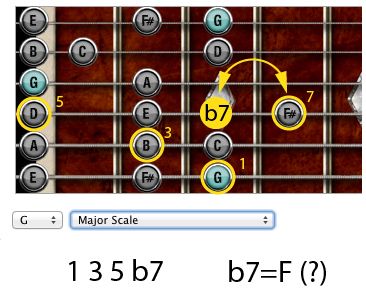I'm a little embarrassed to say I have no knowledge of theory whatsoever, I have never been trained musically with the exception of a few guitar lessons from the local rock guitarist when I was a kid, and even then, my mother essentially paid him so I could sit in the room and watch him jam.
This may be a daunting task. I guess I would like to learn exercises that would help me become faster as well as how, in my mind, I can string patterns together to improvise. I guess the building block to that is theory?
Always

Imagine music, as a foreign language. You can't understand what you are saying if you don't know what the words actually mean, even if you can reproduce some with a good accent even

True?
Now, let's begin with the major scale and a nice exercise

1) We have the major scale built up using this formula: w w h w w w h.
w = whole step
h = half step
2) Any natural major scale is built after this formula. Example:
C D E F G A B C
there's a w between C and D
there's a w between D and E
there's a h between E and F
there's a w between F and G
there's a w between G and A
there's a w between A and B
there's a h between B and C
Now, if you look at your guitar, you will notice that if you play the C note (3rd fret D string) the D note is one whole step up, on the same string. That means that the note right next to the C note is C# and the note next to C # is D. So, 2 frets up means one whole step and one fret up means a half step.
3) Now, we have concluded that E is the major third in the case of C major and if we lower the major 3rd with one half step, we get the minor third and automatically, we can create a minor chord - C minor in our case.
Here are the formulas:
1 3 5 - major chord formula. Example: C E G
1 b3 5 - minor chord formula. Example: C Eb G
4) If you know these now , please tell me how does the D major scale look like - what are the notes making it up. (Use the w w h w w w h formula, starting from D) and tell me the notes making up the D major and D minor chords
What do you think mate?
Cosmin





